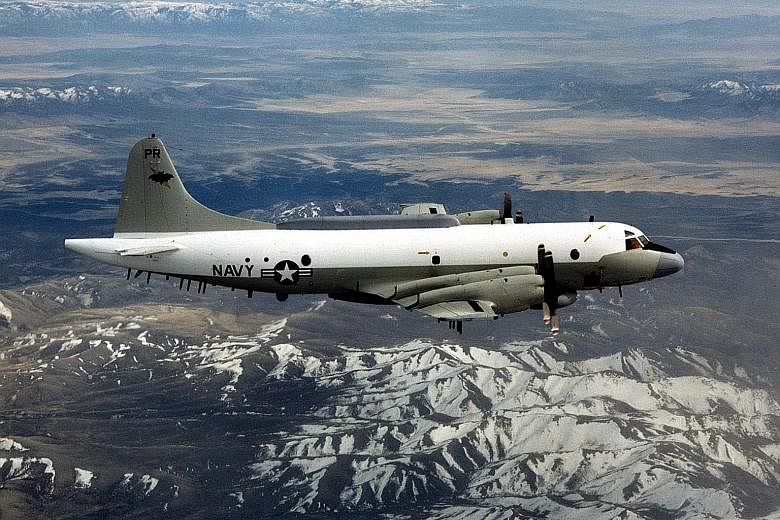Two Chinese fighter jets flew within 15m of an American reconnaissance plane over the South China Sea this week, in the latest of military encounters deepening friction and fears of an accidental clash between the two powers.
The Pentagon said on Wednesday that the two Chinese J-11 jets carried out an "unsafe" intercept of the US EP-3 plane while it was on a "routine patrol" on Tuesday. The encounter reportedly took place in international airspace east of Hainan island and south of Hong Kong.
But Chinese Foreign Ministry spokesman Hong Lei said yesterday the Chinese jets kept a safe distance from the US plane "completely in keeping with safety and professional standards" and "did not engage in any dangerous action".
He also urged the US to cease its reconnaissance activities near the Chinese coast, repeating the government's warning that such actions hurt China's national security.
"We demand that the United States immediately cease this type of close reconnaissance activity to avoid having this sort of incident happening again," added Mr Hong at a routine media briefing.
In a statement sent to the Global Times tabloid, the Chinese Defence Ministry yesterday said it was looking into reports of the encounter, which mirrored an incident in August 2014 when a Chinese fighter pilot flew around a US spy plane.
The US has reportedly conducted at least three military missions since last October to stress its right to freedom of navigation and overflight in the South China Sea, in response to China's construction of civilian-military facilities on islands enlarged through reclamation. China claims nearly all of the South China Sea and its maritime features through a nine-dash line while the Philippines, Vietnam, Malaysia, Brunei and Taiwan have overlapping claims.
Fears of increased tensions have risen of late ahead of a ruling by a United Nations arbitration tribunal on a case initiated by Manila against Beijing's territorial claims.
There has been talk that a ruling unfavourable to China might lead it to declare an air defence identification zone over the South China Sea, like it did over the East China Sea in 2013.
China and the US have been trading accusations. Washington has accused Beijing of militarising the region through its construction activities while China has accused the US of doing the same through its freedom of navigation missions.
Chinese Foreign Minister Wang Yi, speaking in an interview with the Al Jazeera network aired yesterday, defended his country's construction activities in the South China Sea, blaming the US instead of militarisation in the region.
"Other countries have long maintained a large number of military facilities on the islands and reefs around us. We need necessary means and capabilities to defend ourselves, but this has nothing to do with militarisation," he said.
"If one talks about militarisation, we have seen aircraft carriers coming to the South China Sea, strategic bombers flying over the South China Sea waters, and guided-missile destroyers coming close to China's islands and reefs, all to exert military pressure on China.
"I'm afraid this is what militarisation really looks like, including large-scale military drills and the construction of military bases of all sorts in the Philippines."

